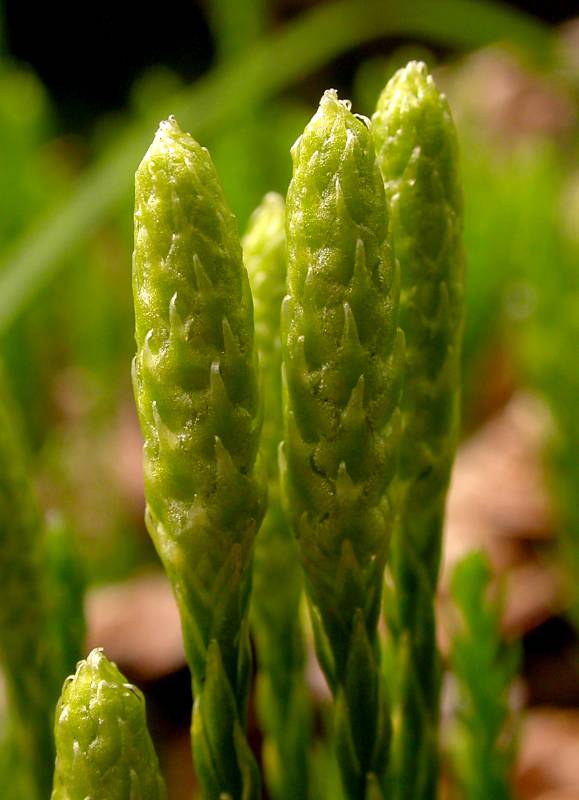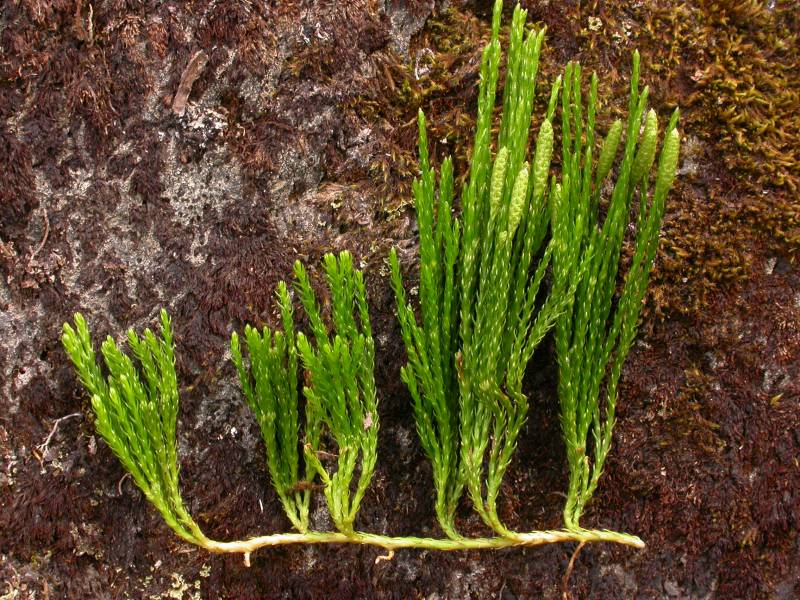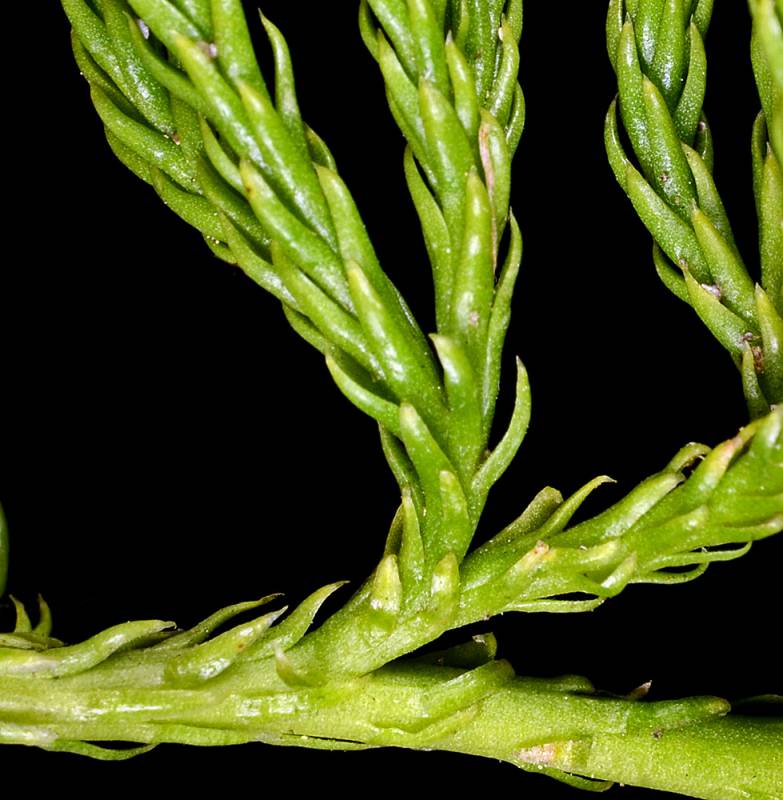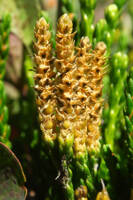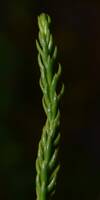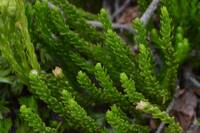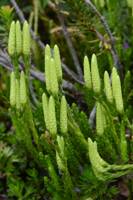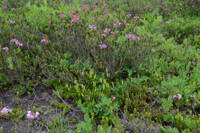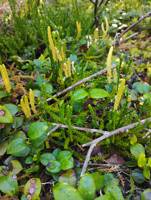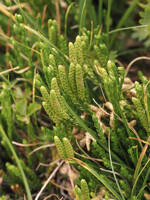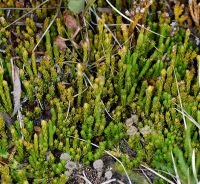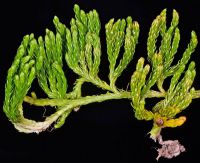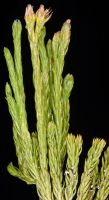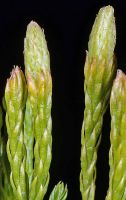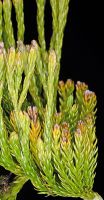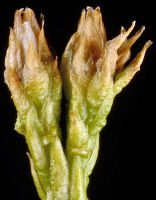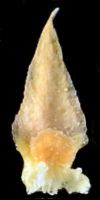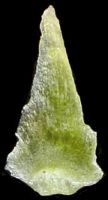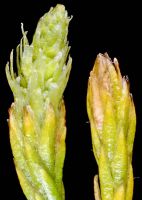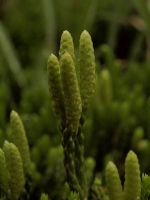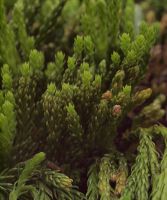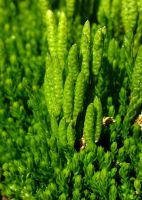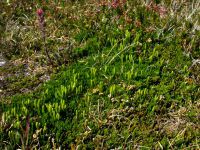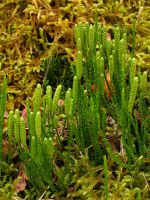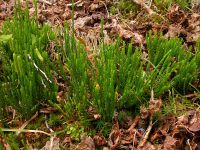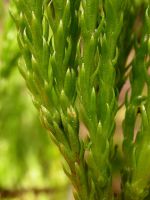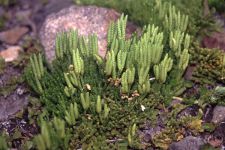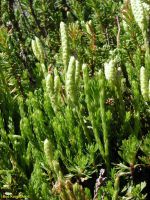Distribution: Occurring in the mountainous areas of Washington. Alaska to Oregon, east to Idaho and Montana, and across central Canada to northeastern U.S. and eastern Canada; also in eastern Asia from Japan north.
Habitat: Subalpine-alpine meadows and open rocky areas at mid-to high elevations in the mountains; occasionally in conifer forest or under brush.
Origin: Native
Growth Duration: Perennial
Conservation Status: Not of concern
Perennial herb, forming dense low mats (occasionally more scattered and erect) with creeping horizontal stems and short, branched, erect stems to 17 cm tall; stems and leaves green to yellow-green.
Small needle-like, to 3 mm long, green to yellow-green, 5-ranked along stem (appear spirally arranged), appressed or slightly spreading.
In stroboli (spore cones) solitary at branch tips, light green to tawny, 5-40 mm long.
The spirally arranged, yellow-green to green, needle-shaped, uniform leaves distinguish L. sitchense from L. alpinum. See also notes under L. alpinum X sitchense.
Our most common and widespread Lycopodium of subalpine and alpine meadows. Hybridizes with L. alpinum.
Publication: Preslia. 47: 108. 1975.
Lycopodium sitchense Rupr. [HC]
PNW Herbaria: Specimen records of Diphasiastrum sitchense in the Consortium of Pacific Northwest Herbaria database
WA Flora Checklist: Diphasiastrum sitchense checklist entry
OregonFlora: Diphasiastrum sitchense information
E-Flora BC: Diphasiastrum sitchense atlas page
CalPhotos: Diphasiastrum sitchense photos

